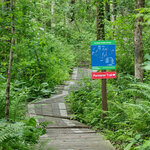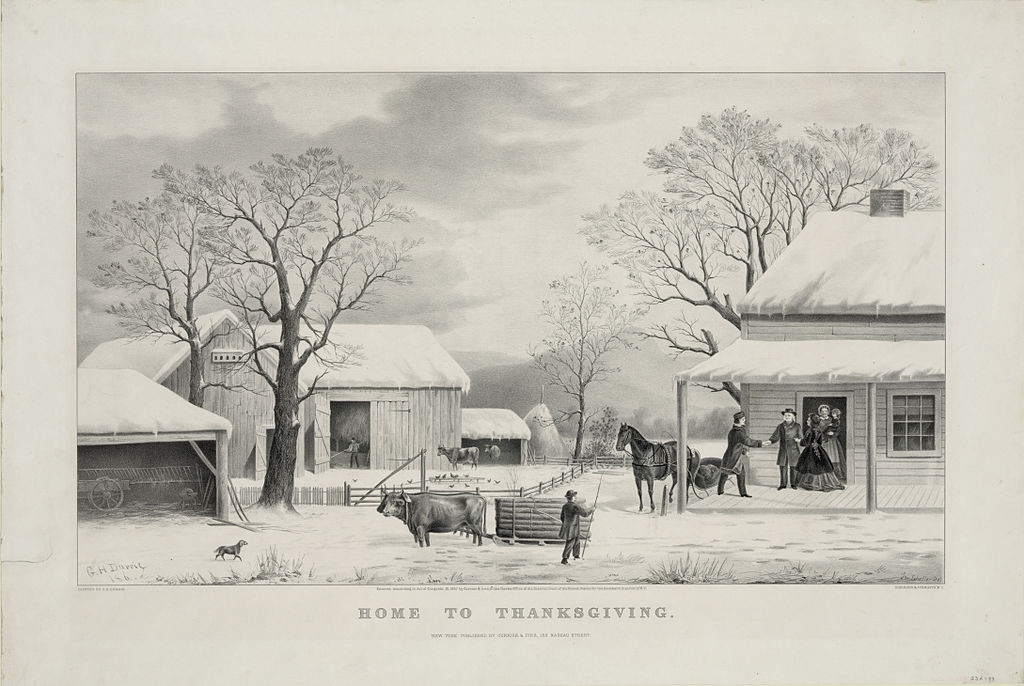Celebrating a Traditional New England Thanksgiving
Thanksgiving is often considered the most American of holidays, yet our modern celebration is quite a bit different than the original one. The Pilgrims and Wampanoags did not feast on a stuffed Butterball turkey, candied sweet potatoes and green bean casserole, and then gather together to watch football on a big-screen television on that first Thanksgiving. We honor the memory of that 1621 feast, but traditions have changed quite a bit in the almost 400 years that have passed since then.
The traditional Thanksgiving meal has not changed too much in the past 200 years, however. By that time, the dinner usually included turkey with stuffing, cranberry sauce, potatoes, and pumpkin pie. But in 1621, the turkeys would have been wild, and the meat served would have included various forms of waterfowl along with venison from the deer the Native Americans (native men only, the women and children stayed home) brought to the feast. Another big difference from today is that the first Thanksgiving celebration went on for three days, not just one.
There were plenty of cranberries and pumpkins, but no sugar or spice to sweeten dishes or liven up the flavor. Potatoes (originally from South America) were still quite a novelty in Europe and unknown in North America in 1621. Other vegetables available to the pilgrims in the early fall, in addition to corn and pumpkins, were parsnips, collards, carrots, turnips, squash, cabbages and onions, along with dried beans, grapes and nuts.
The first Thanksgiving was celebrated earlier in the year than today, some time between September 21 and November 9. Today Canada still celebrates Thanksgiving in October, a sensible approach for a country with such a cold climate in the winter.
The Fourth Thursday of November
How did Thanksgiving come to be celebrated at the end of November? The idea of proclaiming a November holiday for Thanksgiving goes back as far as George Washington. In 1798, President Washington issued a proclamation to "assign Thursday the 26th day of November next to be devoted by the People of these States to the service of that great and glorious Being… That we may then all unite in rendering unto him our sincere and humble thanks." Later presidents made proclamations too, but Thanksgiving was not yet an official holiday.
Then during the Civil War, Abraham Lincoln proclaimed a national Thanksgiving Day to be celebrated the final Thursday of November in 1863. Lincoln was prompted to do this by editorials from Sarah Josepha Hale, a New England writer who is an interesting character herself. She also campaigned for the Bunker Hill Monument and is the author of "Mary Had A Little Lamb" in addition to many more serious works. She is widely regarded as the person most responsible for making Thanksgiving a national holiday. Before that time, it was celebrated mainly in New England.
Giving Thanks
The idea of setting aside a day to give thanks was not new to either the English settlers or the Native Americans in 1621. Both had long celebrated their own forms of thanksgiving. Native people celebrated many different thanksgiving days, such as "strawberry thanksgiving" and "green corn thanksgiving". The English had their own Harvest Home celebrations, and the pilgrims were used to setting aside a day to give thanks when it seemed appropriate. In 1621, the pilgrims' first autumn feast in the New World was in thanksgiving for the plentiful harvest after that first terrible winter, when death claimed half of their number.
Here is what Pilgrim Edward Winslow wrote about that first Thanksgiving: "Our harvest being gotten in, our governor sent four men out fowling, that we might after a more special manner rejoice together, after we had gathered the fruits of our labors. They four in one day killed as much fowl as, with a little help beside, served the Company almost a week. At which time, amongst other recreations, we exercised our arms, many of the Indians coming amongst us, and among the rest their greatest king Massasoit, with some 90 men, whom for three days we entertained and feasted, and they went out and killed five deer, which they brought to the plantation and bestowed on our governor, and upon the captain and others. And although it be not always so plentiful as it was at this time with us, yet by the goodness of God, we are so far from want that we often wish you partakers of our plenty."
Reliving Past Thanksgivings
Here in southern New England we are lucky to be able to experience firsthand a recreation of that first Thanksgiving at Plimoth Plantation, or to relive a Thanksgiving from the early 1800's at Old Sturbridge Village, both just a short drive away. Dining at either of these locations on the big day has become so popular that many of the dinner seatings for Thanksgiving Day are sold out by this time. However, you can check out their websites for last minute information.
You can still plan for a Thanksgiving dinner or buffet on Friday or Saturday at Old Sturbridge Village and also at Plimoth, which will extend its Thanksgiving programs through Sunday. And since many people prefer a big at-home Thanksgiving dinner on Thursday, that Friday or Saturday may be most convenient anyway. There are a number of other activities at both places throughout the weekend, so you can really make a day of it.
At Old Sturbridge Village (osv.org) special Thanksgiving events include a 19th Century shooting match on Friday, Nov. 25, and a recreation of an early New England wedding on Saturday, Nov. 26. On both days there will also be musket-firing demonstrations, 19th century music, and a history of Thanksgiving presentation. You can also join an Indian Doctress on a walk through the village as she shares insights into the healing powers of native plants and talks about Native American traditions of giving thanks.
At Plimoth Plantation (plimoth.org), on Friday and Saturday there will a harvest dinner with the pilgrims at 5:30 p.m. Also throughout the day you can watch Wampanoag people work on a mishoon, a native dugout canoe. You can also take part in a 17th century worship service as the pilgrims would have experienced it, in addition to exploring all the rest of the village and listening to the pilgrim interpreters.
Of all the things we can be thankful for on this bountiful holiday, at the top of the list should be the fact that we don't have to go through all the trials and tribulations the pilgrims at Plimoth went through to appreciate and enjoy our own Thanksgiving feast.
On the other hand, the pilgrims did not feel compelled to get up in the middle of the night after their feast to go stand in the cold and dark waiting for Target or Best Buy to open with pre-Christmas bargains. Going to Plimoth Plantation or Old Sturbridge Village Thanksgiving weekend sounds like a lot more fun!


.pdf.jpg)


















Comments
No comments on this item Please log in to comment by clicking here